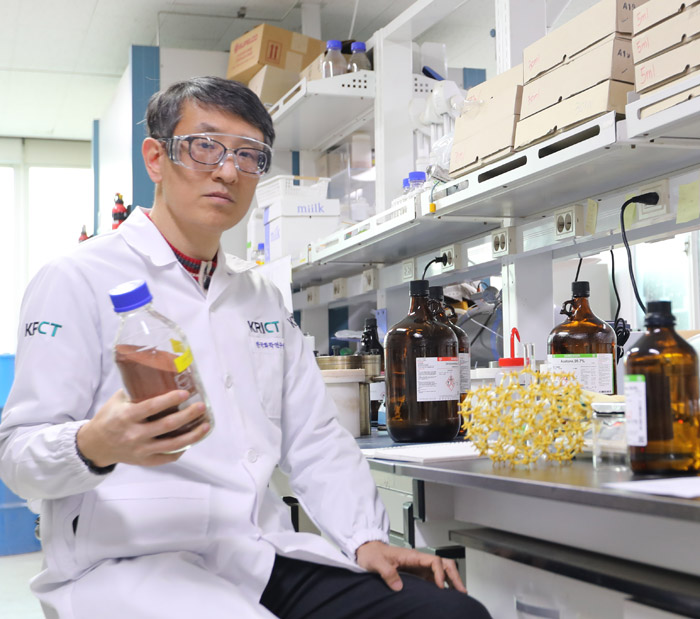Research Stories
Development of an energy-efficient and robust zirconium carboxylate metal-organic framework
Expected to be used as adsorption material for air conditioner and dehumidification dryer.
Chemistry
Prof.
CHANG, JONGSAN
Prof. Jong-San CHANG (Professor, Dept. of Chemistry, Sungkyunkwan University and KRICT) and his co-researchers in the French CNRS have recently published an important article, titled with “A robust large-pore zirconium carboxylate metal-organic framework for energy-efficient water-sorption-driven refrigeration’’ in Nature Energy (doi: 10.103 /s41560-018-0261-6).
The use of electric air conditioners is rapidly increasing due to recent weather changes and global warming. There are more than 1.6 billion electric air conditioners operating in the world. Amount of greenhouse gas emissions due to the use of air conditioner was 1.25 billion tons in 2016. The IEA recently estimated that outdoor units of electric air-conditioners raise the temperature by 1oC overnight in the cities. The new generation of air conditioners will get rid of noisy compressors and greenhouse gas coolants and instead rely on the cooling power of water, thanks to a super adsorbent metal-organic framework (MOF). The porous material could drive adsorption chillers that, instead of consuming huge amounts of electricity, run on industrial waste heat or solar energy.
The water sorption (i.e., molecules capable of fixing water at the surface) is used for heat recovery from industrial processes and solar energy. The typical temperature of in-house warm water systems involving a cogeneration producer does not exceed 63°C, and it can be used for cooling systems and heat pumps. Currently it is based on inorganic porous commercial adsorbents (zeolites or related solids) that suffer from high regeneration temperatures and/or limited pore volumes leading to energy-inefficient systems. To overcome these drawbacks, the researchers designed a new hydrophilic nanoporous hybrid solid with large pores, made of zirconium oxoclusters. Made from zirconium oxo clusters linked by tetracarboxylate units, the MOF can store almost twice as many water in its hydrophilic channels than the silica gel, a common desiccant. The researchers also showed that their material outperforms a commercial zeolite absorbent in terms of cooling performance which is the ratio of cooling to energy input required to release the coolant. For cooling, the overall performance relies not only on evaporation and condensation temperatures of water, but also on adsorption (exothermic) and desorption (endothermic) temperatures, the storage capacity, stability and kinetics of heat exchange. The new Zr-MOF exhibits a microporous structure very stable in presence of hot water. It shows a highly pronounced hydrophilic behavior with significant heat exchanges and a pore size sufficient enough to adsorb large amount of water and also a lower regeneration temperature during desorption step (<65°C). They have performed energetic performance calculations (ratio of the energy taken from the evaporator and the energy needed to regenerate the adsorbent). This analysis revealed that the solid is more efficient than any other evaluated porous materials so far for this type of application. It will lead to the development of a new generation of cooling to recover solar energy or even energy from heat sources related to human activities.
*Thesis title: A robust large-pore zirconium carboxylate metal–organic framework for energy-efficient water-sorption-driven refrigeration, Nature Energy, 3, 985-993 (2018). (DOI:10.1038/s41560-018-0261-6)

